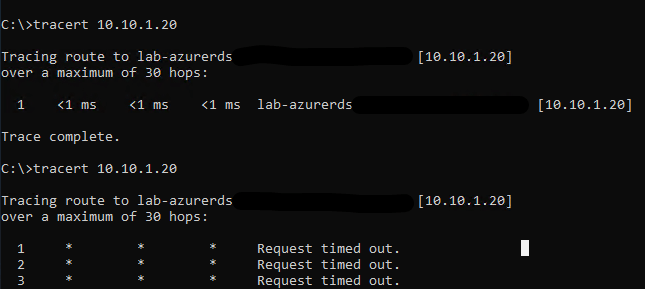Azure Application Gateway is a service provided by Microsoft Azure that allows you to build a scalable and secure web traffic routing solution. It acts as a reverse proxy service, providing features like load balancing, SSL termination, URL-based routing, session affinity, and application-level security.
Designed to optimize web application delivery, Azure Application Gateway enhances the performance, availability, and security of your web applications. It plays a crucial role in managing and distributing traffic to backend servers, ensuring high availability and seamless user experience.
In this post we will be going through deploying and configuring an Azure Application Gateway and present an internal website.
Prerequisites for Deploying Azure Application Gateway:
- Azure Subscription: You need an active Azure subscription to create and deploy Azure Application Gateway.
- Resource Group: A resource group .
- Virtual Network: Set up a virtual network (VNET) where you’ll deploy the Azure Application Gateway. The VNET should have at least one subnet for the gateway and will be dedicated for the gateway.
- Backend Servers: Prepare the backend servers or resources that will handle the web traffic forwarded by the Application Gateway.
- SSL Certificate: If you want to enable SSL termination, obtain an SSL certificate and private key for your domain.
- Public IP Address: Public IP address for the Azure Application Gateway. If you want to expose your application to the internet, a public IP is required.
- DNS Configuration: If you plan to use a custom domain name, set up the DNS records to point to the public IP address of the Application Gateway.
- Application Gateway SKU: Choose the appropriate Application Gateway SKU based on your performance and scalability requirements.
Once all prerequisites are met we can start to deploy the Application gateway.
To start the deployment go to the load balancing blade or search for application gateway and click create.

Select the resource group
set the name, region and tier, instance count, if using WAF2 create a firewall policy and set the VNET to be used(this is recommend to be a /24 subnet mask).

Set frontend IP.

Set the backend target (this can be through IP /FQDN, VM or App Services). I used VM

We need to add a routing rule listener and backend targets.


Set tags and then review configuration and deploy.

The Application Gateway will take a little while to deploy. Once the deployment has finished the gateway should now be showing.

Once deployed we can check to see if the site is contactable by using the public IP for the Application Gateway.

Next we will enable the application gateway logs to send to a log workspace.
Go to Application Gateway and select the diagnostic settings and add diagnostic settings.

Enabled all logs and select log workspace.

We can also add rules to the WAF policy to restrict access to the site. I will be adding a rule to only allow access from my public IP.
To add the rule go the Web Application Firewall policies (WAF) blade and select the policy we created earlier.
Go to custom rules and select add custom rule.

Give the rule a name, enabled, set priority and set the conditions.

Once the rule is added, click save to apply.

We can test accessing the site from the allowed IP and then from a different IP to check the block is working.
We can confirm using the log workspace we configure in the diagnostic setting earlier using a KQL query .
I used the below query.
AzureDiagnostics
| where ResourceProvider == "MICROSOFT.NETWORK" and Category == "ApplicationGatewayFirewallLog"
|
project TimeGenerated, clientIp_s, hostname_s, ruleSetType_s, ruleId_s, action_s
This was a quick run through of deploying and configuring an Application Gateway.





















































